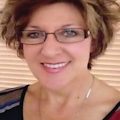The pandemic appears to be reaching manageable levels; at least that’s what the data suggests. For dental professionals, COVID is just one of the many concerns we deal with daily. For decades, HIV, hepatitis, and the common rhinovirus, among many other diseases, have required us to be ever vigilant when it comes to infection control and personal protective equipment (PPE).
While we continue to urge the use of protective shields, many of us have returned to simple face masks and gloves. This may be controversial, but let’s consider the perspective of the OCD (obsessive-compulsive disorder) patient.
What is OCD?
OCD is a mental illness that causes repeated unwanted thoughts or sensations (obsessions) or the urge to do something over and over again (compulsions). Some people can have both obsessions and compulsions.1
OCD isn’t about habits like biting nails or thinking negative thoughts. An obsessive thought might be that certain numbers or colors are “good” or “bad.” An example of a compulsive habit is to wash your hands seven times after touching something that could be dirty. Although you may not want to think or do these things, you feel powerless to stop.
OCD types and symptoms
OCD comes in many forms, but most cases fall into at least one of four categories:1
- Checking: Locks, alarm systems, ovens, or light switches are examples of items people check. Also, thinking you have a medical condition like pregnancy or schizophrenia is a symptom.
- Contamination: This is a fear of things that might be dirty or having a compulsion to clean. Mental contamination involves feeling like you’ve been treated like dirt.
- Symmetry and ordering: This is the need to have things lined up in a certain way.
- Ruminations and intrusive thoughts: This is an obsession with a line of thought, and some of these thoughts might be violent or disturbing.
It is likely that you treat patients with OCD, though you may not be aware. Most patients feel some level of embarrassment and may not share this information without provocation.
More by Diane Paz
Looking for a hygiene position? Time to interview the interviewer
Are you writing SOAP notes for every dental patient? Here's why you should be
The International OCD Foundation estimates that about 1 in 100 adults—between two and three million adults in the US—have OCD, roughly the same number of people who live in Houston, Texas. The OCD Foundation estimates that at least 1 in 200, or 500,000 children and teens, have OCD. This is about the same number of children who have diabetes.2 This means that four or five children with OCD are likely to be enrolled in the average-size elementary school. In a medium to large high school, there could be 20 students struggling with the challenges of OCD.
How clinicians can play a role
As clinicians, we need to be cognizant and nonjudgmental of those with OCD. We should make every attempt to allay fears and instill trust in our practices and our profession. Obviously, this is a condition not easily remedied, but here are some helpful suggestions.
- Review the patient’s health history and make note of any indication or reference to depression, anxiety, or large gaps in treatment visits. Any of these may be a red flag that the patient has concerns, albeit COVID-related or OCD in general.
- Take the time to explain the stringent protocols in place in the office. This ensures they’re aware of how instruments are autoclaved, the professional strength products you use for operatory cleansing, and the ongoing training you receive as a dental hygienist.
- Allow your patients to observe you washing your hands and donning a fresh mask, gown, and gloves.
- Keep your PPE stain free.
- Show patients the unopened, sterilized package with the steam indicator.
- Let them know that prophy cups and saliva ejectors are disposable, as are the anesthetic needles.
- Ensure the operatory looks and smells fresh and clean. Make sure all surfaces are covered.
- Important: Make sure the underside of your “over the chest” delivery system is clean with no rust, residue, or bioburden (blood). I recommend you recline in your own chair from time to time to see what your patients see. This includes the A/C vents and the ceiling.
While your patients will undoubtedly still have concerns, you can tell them that you’ve taken every precaution to ensure their safety.
As we move forward into what we hope is a post-COVID period, history reminds us that other COVID variants are coming. Our responsibility is to stay abreast of the latest recommendations for our patients and our own safety. In doing so, all of our patients can be comforted by the safety measures we implement.
References
- Fields L. Obsessive compulsive disorder. September 28, 2022. WebMD. https://www.webmd.com/mental-health/obsessive-compulsive-disorder[1]
- International OCD Foundation. https://iocdf.org/
About the Author

Diane Paz, DrBH, MEd, RDH
Diane Paz, DrBH, MEd, RDH, earned her CDA and RDH from Phoenix College, her BSDH expanded functions and master’s in education from Northern Arizona University, and her doctorate of behavioral health from Arizona State University. Dr. Paz currently instructs dental students at AT Still University (Arizona School of Dental and Oral Health) in Mesa, Arizona, and instructs online for Rio Salado College in Tempe, Arizona, concentrating on the Community Dental Health Coordinator program. She can be reached at [email protected].
Updated September 2022
